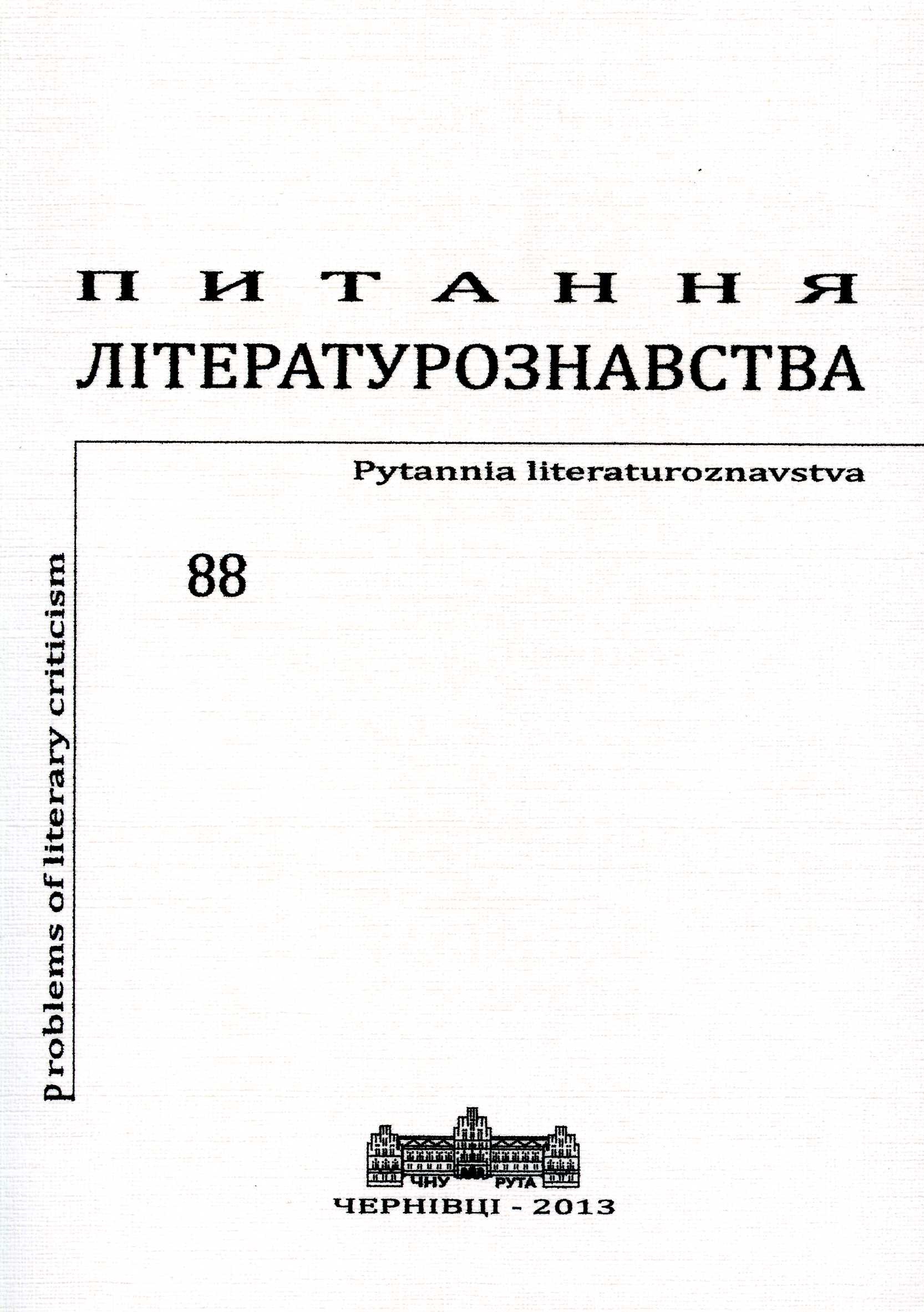Інтермедіальність як жанротворчий фактор (кіносценарна специфіка “Київських фресок” Сергія Параджанова)
Intermediality as a Genre-Specific Factor (Sergii Parajanov’s “Kyiv Frescoes” (“Kyivs’ky Fresky”) Script Specificity)
Author(s): Natalia NikoryakSubject(s): Language and Literature Studies, Russian Literature, Film / Cinema / Cinematography, Theory of Literature
Published by: Чернівецький національний університет імені Юрія Федьковича
Keywords: S. Parajanov; “Kyiv Frescoes” (“Kyivs’ky Fresky”); script; composition; intermediality; ekphrasys; palimpsest; reception;
Summary/Abstract: The purpose of this research is to study intermediality as one of the dominant concepts of literary practice in recent years (N. Tishunina, L. Khaida, O. Profe, N. Mocherniuk, V. Prosalova etc.) by the example of Sergii Parajanov’s “Kyiv Frescoes” (“Kyivs’ky Fresky”) script text. The topicality of this theme emanates from the need to analyze screenplay intermedial codes, including intermedial nature of text architectonic and composition organization, personal sphere and chronotope intermediality, as well as screenplay ekphractic elements and constructive palimpsest. In the text of this screenplay, intermediality appears to be a genre-specific factor. Research methodology is based on complex tools of modern approaches to the separation and analysis of new literary forms for which the state of intermedial contextuality (set of structural and semantic principles, genre studies discourse, and receptive poetics practice).Use of intermediality markers is stipulated by the film author’s desire to return to the art’s original syncretism. In addition, the text intermedial dimension represents the screenwriter’s aesthetic modus, specifically, the Spanish context of the screenplay, as well as the artist’s own receptive and productive needs and the productivity of his impressions of other artists’ works. Intermedial discourse constitutes a specific hermeneutic resource that can not be ignored. Intermedial codes of S. Parajanov’s screenplay reflect the general practice of screenplay text creating. This is the usage of this component that extremely enriches the literary text, thus involving it in an active dialogue with other art forms. “Decoding” of the text intermedial dimension has prime importance for the author's conception disclosure and adequate understanding of the implications. In addition, the role intermedial markers are called for is to awaken creative, associative reader-viewer’s thinking, encourage him/her to adequate creative reflections.
Journal: Питання літературознавства
- Issue Year: 2013
- Issue No: 88
- Page Range: 351-367
- Page Count: 17
- Language: Ukrainian

